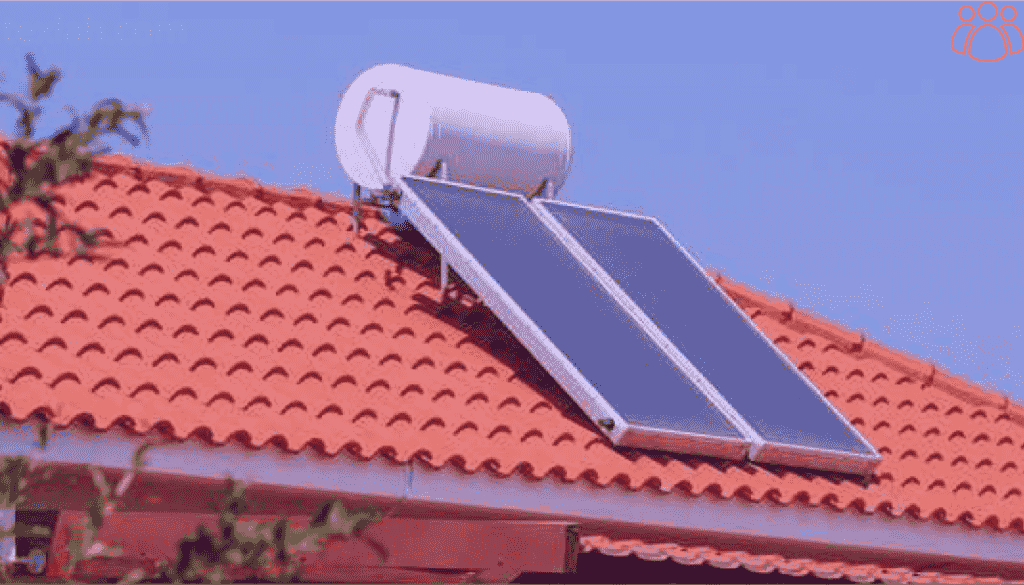Active solar energy systems, including photovoltaic (PV) and solar water heating systems, employ cutting-edge technology to harness the sun’s energy for electricity generation and heating. In PV systems, solar panels semiconductor cells convert sunlight into direct current (DC) electricity, which is then transformed into alternating current (AC) by an inverter. This electricity can be utilized on-site or fed back into the grid. Solar water heating systems utilize solar collectors to absorb sunlight, heating a fluid that transfers thermal energy to water through a heat exchanger, the heated water stored for various applications. With components like inverters, pumps, and controls, active solar systems offer precision and efficiency in energy production, making them versatile and environmentally friendly solutions for residential and commercial needs.
In a quest for sustainable energy, active solar energy emerges as a beacon. This blog guide unravels the intricate dynamics of active solar systems, shedding light on the technology that harnesses the sun’s power for a greener future. Thus, explore How Does Active Solar Energy Work.

Read more: Can you put Solar Panels on a Metal Roof?
Understanding Active Solar Energy
1. Solar Photovoltaic (PV) Systems:
– Explore fundamental principles as solar PV systems convert sunlight into electricity.
– Break down components like solar cells, inverters, and tracking systems for efficient energy harvest.
2. Solar Water Heating Systems:
– Unveil the mechanics of solar water heaters, providing sustainable alternatives for water heating.
– Examine types, from batch collectors to concentrating collectors, revolutionizing water heating.
Key Components of Active Solar Systems
1. Solar Collectors:
– Delve into solar collectors—flat-plate, concentrating—that capture and absorb solar radiation.
– Understand materials and design optimizing collector efficiency.
2. Solar Absorption Chillers:
– Explore solar energy’s role in absorption chillers for eco-friendly air conditioning.
– Analyze how these systems provide sustainable cooling solutions.
Integration into Residential and Commercial Spaces
1. Residential Solar Applications:
– Investigate active solar energy for homes, from rooftop panels to integrated water heating.
– Understand economic and environmental benefits for residential spaces.
2. Commercial Solar Installations:
– Examine large-scale solar installations in commercial settings, from solar farms to industrial applications.
– Uncover challenges and innovations in diverse commercial environments.
Advancements and Innovations
1. Smart Grid Integration:
– Explore active solar systems in smart grids for efficient energy distribution.
– Understand the role of energy storage in mitigating solar power intermittency.
2. Emerging Technologies:
– Investigate cutting-edge technologies—solar skin, transparent solar cells—pushing active solar energy boundaries.
– Discuss potential impacts on the future of solar energy.
Environmental and Economic Impacts
1. Carbon Footprint Reduction:
– Analyze environmental benefits, reducing carbon emissions and combating climate change.
– Explore case studies showcasing positive ecological impacts.
2. Economic Viability:
– Delve into economic aspects, from installation costs to long-term savings.
– Discuss government incentives promoting solar economic viability.
Challenges and Future Outlook
1. Overcoming Obstacles:
– Examine challenges—intermittency, storage, economic barriers—faced by active solar energy.
– Discuss ongoing research and innovations addressing these challenges.
2. The Future of Active Solar Energy:
– Speculate on the future of active solar energy technologies.
– Consider breakthroughs and the role of active solar systems in shaping a sustainable energy landscape.
What are the advantages and disadvantages of active solar heating?
Active solar heating systems offer both advantages and disadvantages, making it essential to consider various factors when deciding on their implementation.
Advantages
1. Renewable Energy Source: Active solar heating relies on sunlight, a renewable and abundant energy source, reducing dependence on non-renewable resources.
2. Cost Savings: Over time, active solar heating systems can lead to significant cost savings on energy bills, especially in regions ample sunlight.
3. Reduced Environmental Impact: Utilizing solar energy helps reduce greenhouse gas emissions, contributing to a cleaner environment and combating climate change.
4. Versatility: Active solar heating systems can be designed for various applications, including space heating, water heating, and even electricity generation in the case of photovoltaic systems.
5. Government Incentives: Many governments offer financial incentives, tax credits, or rebates to encourage the installation of active solar heating systems, making them more economically viable.
Disadvantages
1. High Initial Costs: The upfront costs of purchasing and installing active solar heating systems can be relatively high, although this may be offset by long-term savings.
2. Weather Dependency: The efficiency of active solar systems is weather-dependent, reduced effectiveness on cloudy days or during nighttime hours, necessitating backup systems.
3. Space Requirements: Solar collectors or panels may require ample space for installation, which could be a limitation for some properties.
4. Aesthetic Impact: Some individuals may find solar collectors or panels aesthetically unappealing, impacting the visual appearance of a property.
5. Technical Complexity: Active solar heating systems involve technical components such as pumps, controllers, and inverters, which may require maintenance or technical expertise.
Balancing these advantages and disadvantages involves considering factors such as local climate conditions, available space, budget considerations, and individual preferences. Evaluating the specific needs and circumstances of a property is crucial in determining the suitability of active solar heating systems.
Conclusion: How Does Active Solar Energy Work
As the world pivots towards renewable energy, understanding how active solar energy works becomes paramount. This guide not only unveils the intricate mechanisms but also explores applications, impacts, and the road ahead. Embrace the solar revolution for a cleaner, greener energy future.
Quantum Computing’s Quantum Leap: Revolutionizing AI Applications
